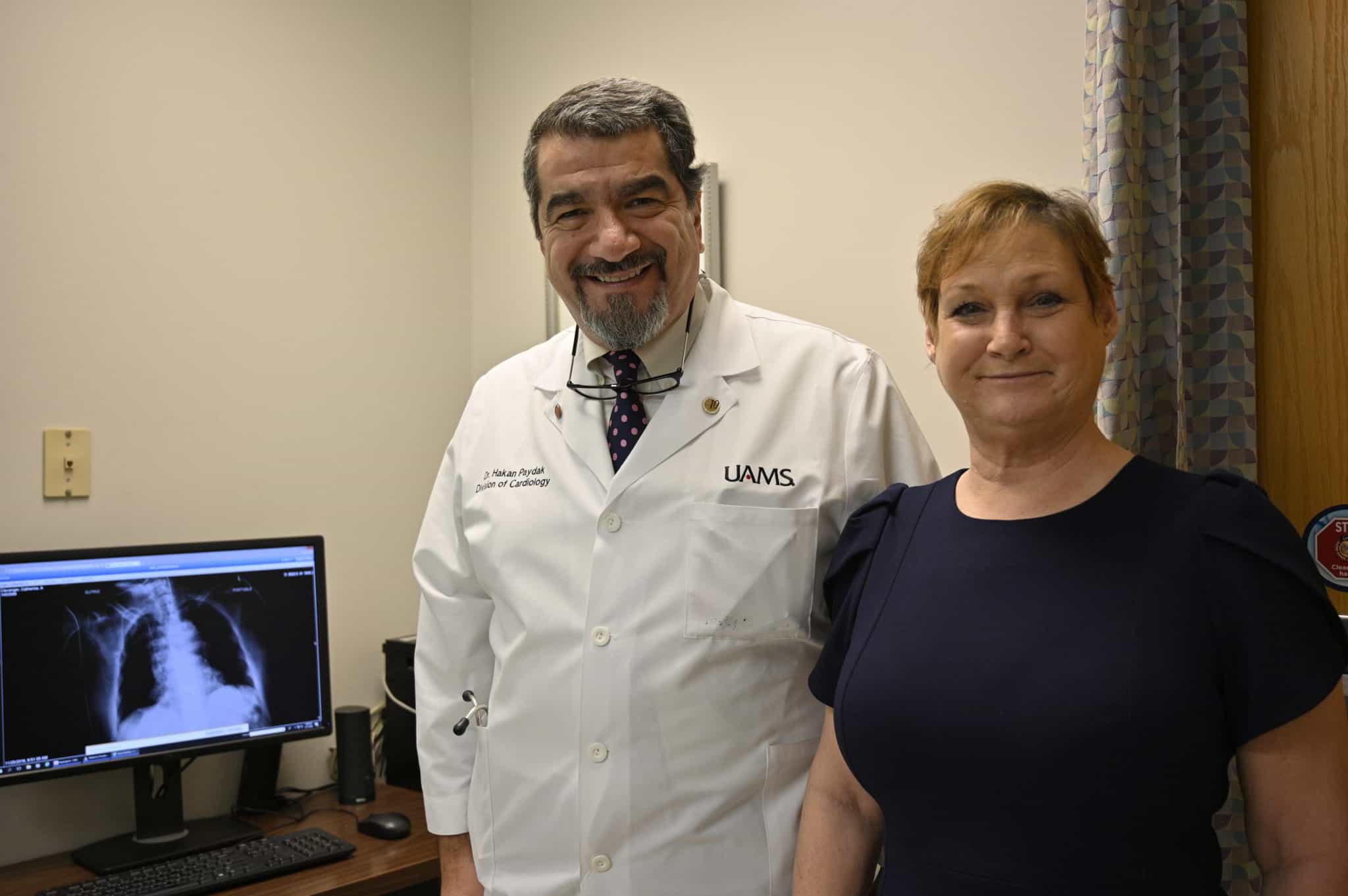View Larger Image

Kathi Clevenger with her cardiologist, Hakan Paydak, M.D.
Student Doesn’t Miss a Beat with New Leadless Pacemaker
| Last year at this time, Catherine (Kathi) Clevenger was running an average of six miles every day and would spend her free time studying at the University of Arkansas at Little Rock.
But around August, she noticed something was off. She would occasionally experience shortness of breath, heart palpitations and fainting.
“Sometimes I would wake up in the middle of the night and have to catch my breath, she said. “Other times my heart would feel like it was beating really fast. It was scary.”
Clevenger, 62, made an appointment with UAMS heart rhythm specialist, Hakan Paydak, M.D., a professor of Medicine, director of the Clinical Cardiac Electrophysiology Program, and associate chief of the Division of Cardiology. He diagnosed her with arrhythmia.
“She needed a pacemaker, but we looked for alternative treatments because she has a history of infection from implanted devices,” Dr. Paydak said. “When she started having injuries as a result of her passing out episodes, we decided a pacemaker was right for her, but she was to be carefully monitored.”
She got a conventional pacemaker in August 2019. A week later, Clevenger developed an infection. She ended putting her classes on hold and spent most of the following month in the hospital.
“Dr. Paydak, being the physician he is, knew what to look for because he listened to me and read my records carefully,” Clevenger said. “I think with any other doctor, I wouldn’t be here due to the infections.”
Paydak took out the pacemaker, but it was apparent that Clevenger needed something to help regulate her heart’s rhythm. Conventional pacemakers are implanted in the upper chest, just under the skin. Thin wires called “leads” connect the device to the heart and deliver electrical pulses.
But now there are leadless pacemakers. They’re less invasive to implant, and less likely to become infected. The Food and Drug Administration approved the first leadless pacemaker in 2016. Clinical trials found that 98 percent of patients had adequate heart pacing six months after the device was implanted. Complications occurred in fewer than 7% of participants in the trials.
After she was treated with antibiotics and Paydak was sure the infection was gone, he placed the leadless pacemaker into Clevenger’s heart Nov. 25. The device, about the size of a large vitamin, is inserted through the groin via a catheter and took about an hour.
“These devices can pace in synchrony with the upper chamber and the lower chamber. The synchrony percentage is more than 90%. This is a great advantage, and it looks like leadless pacemakers will be the future for us,” Paydak said.
Clevenger feels more like herself now.
“I haven’t had any heart palpitations, no dizziness. It’s just really been a good thing,” Clevenger said. “I’m hoping to start running again anytime. That’s my goal.”
She’s back in school, hoping to become a lawyer. And she feels confident she can call on her cardiologist any time she has a concern.
“Honestly, I trust him for life. I really do I think he’s a great doctor. He’s the only doctor I’ve ever known that actually gives you his card when he sees you and says, ‘Call me at home.’ He’s dedicated. He’s more than just a doctor, he’s my friend. And I don’t think I’m the only one who feels that way about him.”

